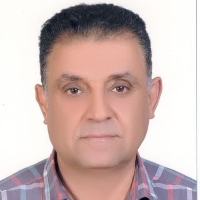The prevalence of root lesion nematodes (Pratylenchus thornei & P. neglectus) in wheat and barley fields in Khuzestan province, as well as the contamination status of these fields
Iran’s Khuzestan province ranks first in wheat production. Root-lesion nematodes (RLN) are a group of plant parasitic nematodes that includes several closely related species of economically significant cereals. There have been eight species of RLN recorded for small grains. Four species (P. thornei, P. crenatus, P. neglectus and P. penetrans) are found worldwide, particularly in temperate zones. P. neglectus, P. thornei, P. pseudopratensis and P. penetrans prevalent in Iranian wheat fields. However, there is insufficient information regarding the status of RLN in the province of Khuzestan’s cereal fields. The objective of this study was to determine the occurrence, distribution and population density of RLN in wheat and barley fields in Khuzestan province.
A survey was conducted over three years (2008-2011), where 169 wheat and 31 barley fields were inspected and sampled in 21 regions during the grain filling and harvesting periods in the Khuzestan province of Iran. A stereomicroscope was used to examine the root tissue of 10 wheat and barley plant samples for disease symptoms. The Whitehead tray method was employed to process 250 cm3 of soil from each collected soil sample. The RLN species were identified using morphological and morphometric characteristics. ArcGIS 9.3 software was utilized to map the distribution of RLN on the map of Khuzestan.
Results indicated that 37% of wheat fields in the regions of Ahvaz, Andika, Andimeshk, Baghmalek, Behbahan, Dasht-e Azadegan, Dezful, Gotvand, Hoveyzeh, Izeh, Lali, Omidiyeh, Ramshir, Ramhormoz, Shadegan, Shushtar, and Shush were infested with P. thornei and P. neglectus, with mean population densities of 39 and 101 nematodes per gram of root and 250 cm3 of soil, respectively. In addition, 42% of barley fields in Andika, Baghmalek, Izeh, Lali, Omidiyeh, and Ramhormoz were infested with the nematode, with mean population densities of 9 and 72 nematodes per gram of root and 250 cm3 of soil, respectively. The regions with the highest and lowest nematode populations were Shush, Shusthar, Baghmalek, and Hendijan, with densities of 1,334, 904, 11, and 100 per 250 cm3 of soil, respectively. Ten percent of the surviving fields exhibited nematode populations exceeding 1-2 per gram of soil, which is extremely likely to cause cereal crop damage.
Pratylenchus thornei, P. neglectus, and a mix of the two species were observed in 62, 18, and 20% of the surveyed fields in Khuzestan, respectively. In both wheat and barley fields, P. thornei was the dominant species. Globally, P. thornei is deemed more dangerous than P. neglectus. This is the first report of the presence of root lesion nematodes in wheat and barley fields in Khuzestan province, with contamination rates of 37 and 42%, respectively. Disease incidence was higher in irrigated fields than in rain-fed fields, indicating that soil moisture and nutrients positively influence the nematode population. The nematode population density was higher in wheat fields than in barley fields, confirming that barley is a poor host for RLN. The economic damage thresholds for P. thornei and P. neglectus on wheat have been reported to be 1-2 nematodes per gram of soil in various parts of the world. The most important management practice is the use of resistant and tolerant wheat varieties to RLN.
- حق عضویت دریافتی صرف حمایت از نشریات عضو و نگهداری، تکمیل و توسعه مگیران میشود.
- پرداخت حق اشتراک و دانلود مقالات اجازه بازنشر آن در سایر رسانههای چاپی و دیجیتال را به کاربر نمیدهد.



